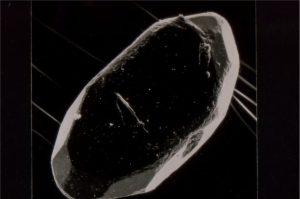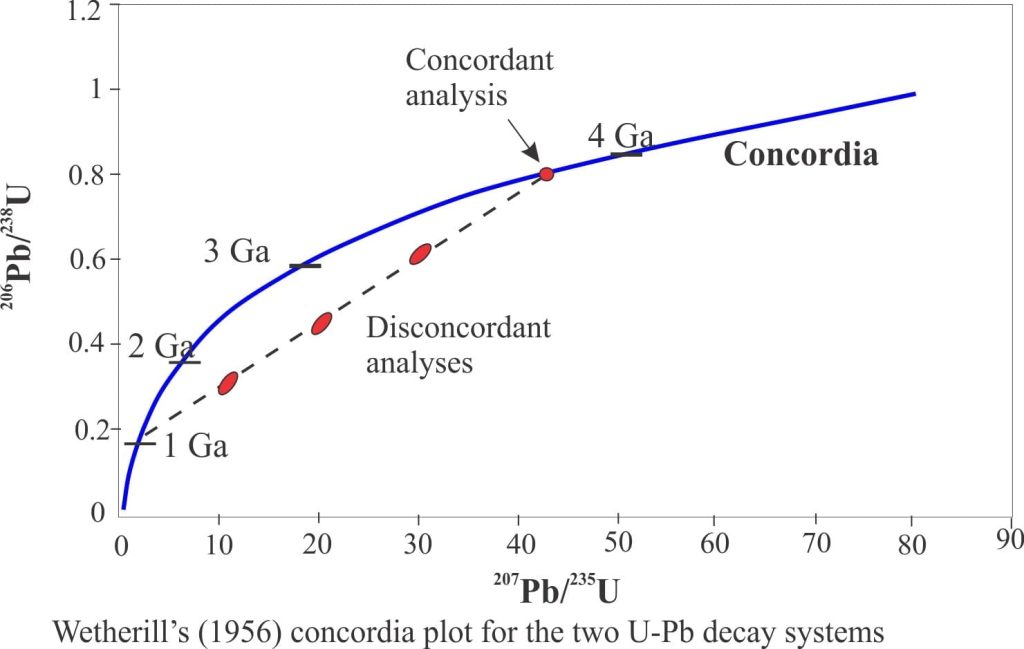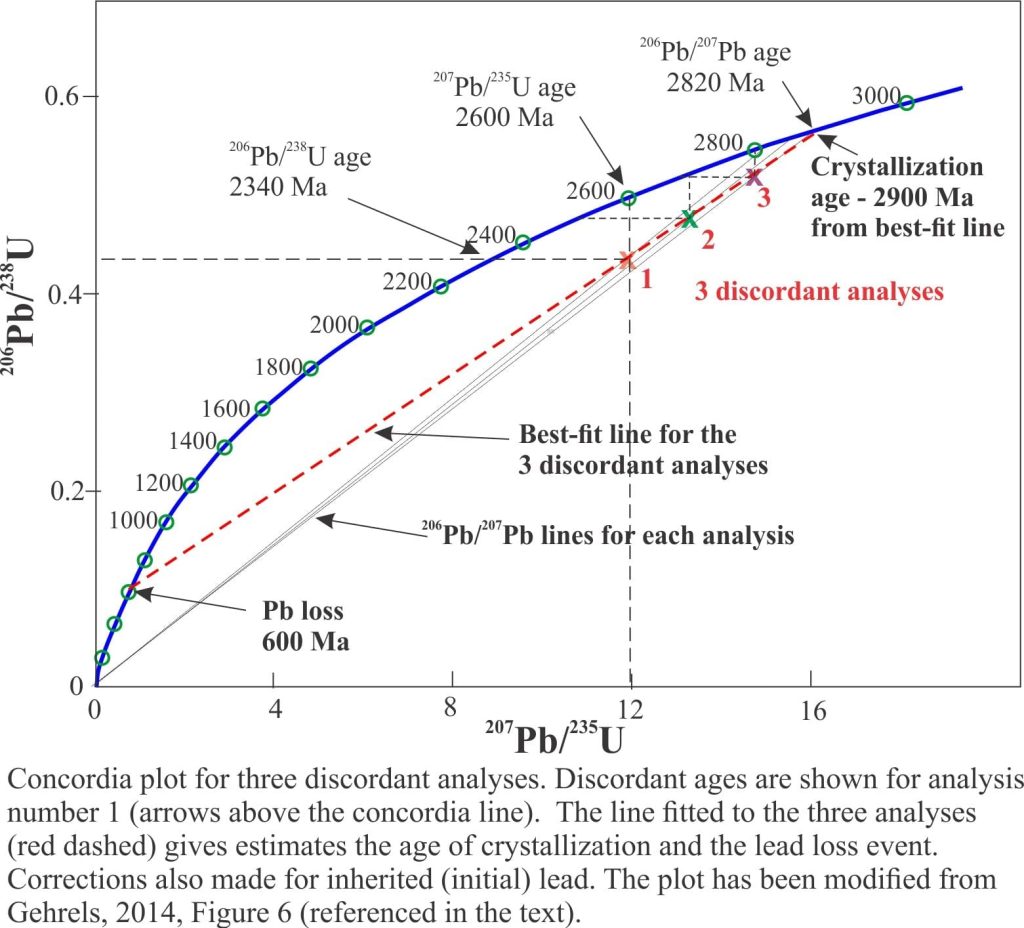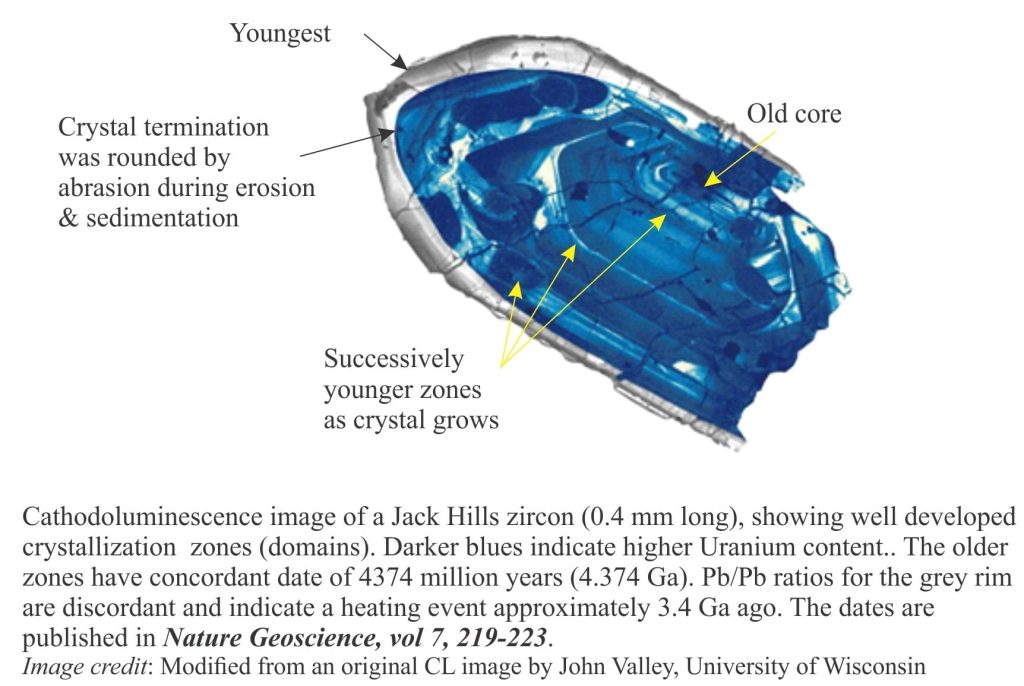This post is part of the How To…series – using zircon geochronology to decipher provenance
Zircon is a common accessory mineral in igneous and metamorphic rocks so it’s not surprising that it is also a common constituent of sedimentary heavy mineral suites. Detrital zircon has assumed a remarkable popularity over the last 2-3 decades as a provenance indicator because:
- crystals contain measurable amounts of uranium (U), lead (Pb) and thorium (Th) isotopes and can therefore be dated radiometrically,
- zircon is resistant to chemical and mechanical change – crystals can survive multiple sedimentary cycles (i.e. episodes of erosion from source rocks, deposition, burial and uplift, whereupon the whole process begins anew), and
- they commonly contain multiple stages of crystal growth that record magmatic, metamorphic and depositional episodes.
The technology required to determine zircon age, or geochronology has advanced to the point where the relevant isotopes can be measured in single crystals and importantly, specific zones within a single crystal. You will need a mass spectrometer to do this, a complicated and expensive piece of machinery. Fortunately, there are quite a few around (geoscience institutions will often share the costs). One of the more popular kinds of mass spectrometer (the Laser Ablation-Inductively Coupled Plasma Mass Spectrometer – a bit of a mouth full, so try the acronym LA-ICP-MS) uses a focused laser beam to ablate (vaporize) regions of interest in a single zircon crystal (George Gehrels has written an excellent review of zircon geochronology that outlines the different kinds of mass spec and their limitations).
U, Pb and Th isotopes in zircon participate in three decay systems – each system is a geochronometer in itself; 238U→206Pb (the half-life of 4.47 Ga is almost the same as the age of the Earth), 235U→207Pb (half-life of 0.70 Ga), and 232Th→208Pb (half-life 14.01 Ga – getting close to the age of the universe) (1 Ga = 1 billion years). Mass spectrometers can measure each parent and daughter isotope. Zircon geochronology takes these isotope measures and calculates the age based on three isotope ratios: 206Pb/238U, 207Pb/235U, and 208Pb/232U).
In 1956 George Wetherill published a graphical display of U-Pb isotope ratios and radiometric age – the Concordia plot; the plot has since become a standard method of displaying zircon ages. The standard graph is a curve that plots age against the three Pb/U ratios for the two U-Pb decay systems, assuming an ideal closed system (i.e. no loss of any isotope during a crystal’s lifetime). The measured isotope ratios for any crystal or batch of crystals are compared with this ideal curve; if the age from each decay system is the same and they lie on the curve, i.e. they are concordant, then that is the true age of the sample.
However, the real world is a bit more complicated. Discordant ages are caused by Pb loss, or where Pb is present at the time of crystallization before the U-Pb decay clock is set; this is called Pb inheritance. Discordance also results from the analysis of several crystals of different ages in a single sample, or from single zoned crystals where ages from the inner most to outer most zones become progressively younger. Discordant ages usually plot below the concordia.
However, all is not lost, because analyses from multiple zircons of the same sample or from different zones (domains) of the same crystal, may plot as a best fit to a straight line, a discordia. The discordia passes through two points on the concordia and each intersection will represent some geological event: the older intercept is commonly taken to represent the age of crystallization and the younger intercept to some Pb loss process like hydrothermal alteration. Note however that neither of these discordant ages is likely to be accurate because of the cumulative errors from multiple analyses, and errors inherent in “fitting” the straight-line segment.
Detrital zircons and provenance
Advances in mass spectrometer technology have improved the accuracy of radiometric dating and the rapidity of analysis to the point where detrital zircon geochronology has become routine (more or less). Detrital zircons are used increasingly to identify sediment source rocks and ancient drainage systems, to track allochthonous terranes and find elusive fragments of Earth’s most ancient crust.
Zircons are the mineral of choice in the search for Earth’s oldest rocks. The Jack Hill zircons (Western Australia) contain a wealth of information, being the oldest known fragments of crust (perhaps as old as 4.4 billion years). They record episodes of magmatism, metamorphism, and at least one episode where the evolving crystals were smoothed by turbulent flowing water 4.1 billion years ago (a mere 400-500 million years after Earth’s accretion from the solar nebula).
Knowing the age of zircons sampled from suites of sandstone can help link potential source rocks and source regions. In his review (reference given above), George Gehrels points to the example of Paleozoic sandstones that underpin Grand Canyon. Prior to the advent of zircon geochronology, it was generally thought the sandstones were derived from local basement and the ancestral Rocky Mountains. Recent zircon systematics have forced a rethink of these ideas where source areas much farther afield, including the Appalachian and Caledonian orogens, also contributed large volumes of sediment.
Zircon provenance can also help resolve long-standing disputes over the movement of ancient terranes (i.e. lithosphere-scale continental, oceanic and magmatic-arc blocks). For example, the western Cordillera of North American is a collage of allochthonous terranes that have accreted to the ancient North American craton over the last 180-200 million years. One of these terranes, Alexander Terrane, became fully accreted to the western Canadian margin sometime in the Early Cretaceous. But where Alexander Terrane came from originally is still debated. Zircon geochronology has helped to reconcile the sometimes contradictory paleomagnetic and paleontological evidence, and at the same time opened the possibility of it having travelled from as far afield as ancient Australia, Mexico, Siberia, or Baltica along the eastern margin of Laurentia (the ancient north American plate).
The average size of detrital zircons is only a few 10s of microns. But their diminutive stature is offset by the volumes of information packed into each crystal. Their role in solving problems of stratigraphic succession, provenance, and the tectonics of disparate plates will become increasingly important. Use the technology if you have the opportunity; if not, at least keep an eye on the developments.
Selected references:
Gehrels GE, Blakey R, Karlstrom K, Timmons M, Dickinson W, Pecha M. 2011. Detrital zircon U-Pb geochronology of Paleozoic strata in the Grand Canyon. Lithosphere 3:183–200
Gehrels GE, Butler RF, Bazard D.R. 1996. Detrital zircon geochronology of the Alexander terrane, south-eastern Alaska. Geol. Soc. Am. Bull. 108:722–34
Ingersoll RV, Grove M, Jacobson CE, Kimbrough DL, Hoyt JF. 2013. Detrital zircons indicate no drainage link between southern California rivers and the Colorado Plateau from mid-Cretaceous through Pliocene. Geology 41:311–14
Lawton TF, Hunt GJ, Gehrels GE. 2010. Detrital zircon record of thrust belt unroofing in Lower Cretaceous synorogenic conglomerates, central Utah. Geology 38:463–66
Miller EL, Kuznetsov N, Soboleva A, Udoratina O, Grove MJ, Gehrels GE. 2011. Baltica in the Cordillera? Geology 39:791–94
And at the risk of being a tad self-serving –
Ricketts, B.D. 2019. Cordilleran Sedimentary Basins of Western Canada Record 180 Million Years of Terrane Accretion. Chapter 10, The Sedimentary Basins of the United States and Canada (Second Edition), A.D. Miall Editor, pages 445-475.





















